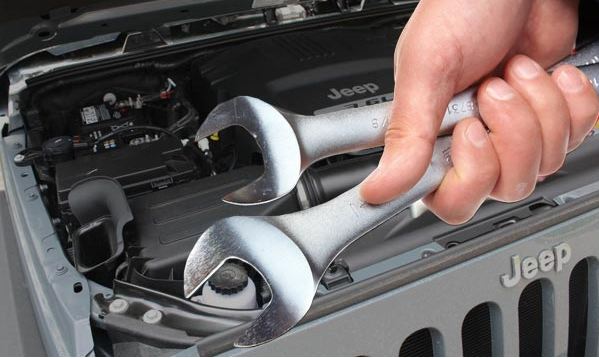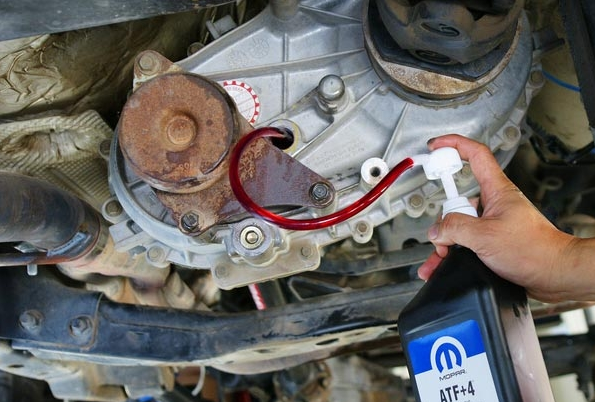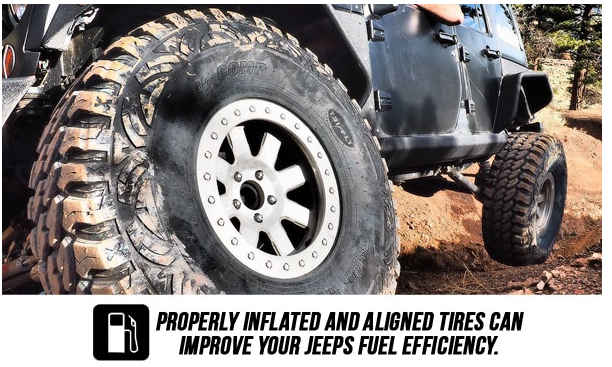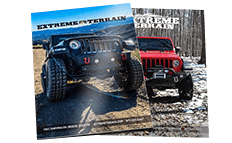
No matter if you have a new Cherokee or an old Wrangler, regular Jeep maintenance is a fact of life. You can seriously extend the life of your vehicle by keeping up with fluid changes, filter changes, and keeping your Jeep in tip top shape. Jeep maintenance costs are relatively low compared to the alternative. It's not only good for your Jeep, it's good for you. No one wants to break down at the wrong time. And on a Jeep, that could be hundreds of miles from nowhere. Or in an emergency when you depend on your Jeep the most. By taking care of you Jeep, it will take care of you. Here's a few things to keep the Jeep love going mile after mile. It's true what they say as far as Jeep repair, "You can pay me now, or pay me later". Meaning, maintaining a vehicle is far less costly than ignoring the health of your Jeep, and then having a big repair, a catastrophic repair, further down the line. Something that could have been avoided if only you did a few fluid changes now and then. That said, let's cover some of the basics of Jeep Wrangler maintenance.
Change Your Jeep's Oil!

Hey, that's an easy one. Everybody's heard of an oil change. But do you know when you last had it changed? or at what mileage? Maybe that's a foggy area for you. The engine is the heart of your Jeep. If that isn't doing it's part, you're not going anywhere. You're dead in the water. The engine oil is the life blood that keeps it lubricated. But oil breaks down from heat and time. It becomes contaminated with fine particles. So it's important to get it changed. Check your owners manual for how often. And when you have it changed, make sure you get a window sticker to let you know when the next time is coming around. We carry engine oil in Royal Purple and Pennzoil. You can learn more about changing your oil, and the different kinds of oils available by checking out the article, Oil Change Basics and Parts to Keep Your Engine in Top Shape.
Flushing and Changing Jeep Coolant / Antifreeze

Keeping your engine cool is important. Not just for the engine, but for you, too. If you use your air conditioning, having an engine run at the right internal temperature is critical. Heat can destroy an engine in minutes, causing head gaskets to blow, engine heads to warp, radiators and hoses to burst. It's a complete mess if any one of those critical parts fail. Overheating the AC system can cause things like the compressor to overheat, killing any cool breezes you were hoping for. The goal is to change the fluid when required. Flush it out of the radiator, and the engine block. Then replace it with the proper fluid. At ExtremeTerrain, we carry coolant / antifreeze, including the factory MOPAR fluids your Jeep was born to use. For the folks up north, the antifreeze keeps the water from freezing in your engine block and hoses. That's very important. For more about cooling systems and coolant, check out the article Keeping Your Jeep’s Cooling System in Working Order.
Flushing Jeep Transmission Fluids

Transmission fluids require you to change them at regular intervals, though they can go much longer than engine oil. No matter of you have an automatic transmission or a manual, the fluid should still be flushed and changed when required. An automatic transmission typically runs about 100 degrees hotter than the engine, so you can understand why that fluid can be brown and burnt looking when changed. That's all the more reason to keep up with it, and get some fresh fluid in there when your Jeep manual says to. We carry new transmission fluids in a couple of brands, including Royal Purple and MOPAR. It's very important on an automatic transmission you use the correct fluid recommended by the vehicle manufacturer. By using incorrect fluids, you could damage the transmission. The fluids have many designations, such as ATF+4, DEXRON IV, CVTF+4, etc. And that's just a few Chrysler / Jeep types. There're dozens of different fluids for the various car makers. Just so you're aware. An automatic transmission normally requires you to change the filter as well, at the same time as the fluid. Those filters are specific to each transmission, but we carry a wide selection, so it's most likely we have the one you need. On a manual transmission, you usually only have to change the fluid. Very few of them use a filter, because the fluid is always in the transmission case (unless you have a transmission cooler, or something like that). Luckily, most manual transmissions also have a drain plug underneath, so you only have to drain the trans, and then refill it. We carry several types of fluids for manual transmissions. Older manual transmissions use a thicker oil, like gear oil, say, an 80/90 weight. Newer manual transmissions are designed to operate on thinner fluids, so in many cases, they use the same oil as an automatic transmission (like a Borg Warner T5 for instance).
Correct Transfer Case Fluids

Transfer cases are similar to transmissions in that there are a variety of different types of transfer cases, and they can use different fluids. It's important that you use the right one. Like a manual transmission, older transfer cases use a thick oil, like an 80/90 or similar weight. While newer transfer cases use thinner oils, such as an automatic transmission type fluid. They also use a drain plug on the case to easily drain the old fluid out, and normally don't use a filter.
Brake Fluid Flush

It's rare that brake fluid gets flushed, unless your brakes are being worked on, and the fluid gets flushed out at the same time any air is purged from the system. If you don't feel like changing the fluid all at once, and bleeding the entire vehicle, you can change the fluid in the brake master cylinder reservoir. Just do that once in a while, and the new fluid will eventually work it's way into the system. Here's a quick hint: get a cheap turkey baster from the Dollar Store. It will suck that old brown fluid out of the reservoir in just minutes! You can learn more about brakes in our article Jeep Brakes – the Basics.
Jeep Gear and Axle Fluids

Considering how hard Jeeps work their axles, it's no wonder these are critical parts that need regular fluid changes. Especially if you do any serious off-roading. Different axles can use different fluids, but on today's models, it depends on if you have an LSD (Limited Slip Differential), and if your vehicle requires a synthetic gear oil. Whichever one you need, we carry both, so you're covered. We carry gear oil in MOPAR, Royal Purple, and Pennzoil. Note that a LSD requires a special additive in addition to the gear oil.
Replace Your Fuel Filters

On the old carburetor engines, a fuel filter was usually under the hood. Somewhere between the mechanical fuel pump and the front of the carb. They were cheap and easy to swap out. They also created a potential fire hazard if not inspected and replaced. With modern fuel injection, a fuel filter can be in several locations, and some vehicles have more than one. The filters of today are for high pressure (28 to 38 psi, or around there) as opposed to a carb, which only needed about 7 psi. An EFI fuel filter can be under the hood, on a frame rail, and even in the gas tank (such as a Toyota). Because they are often unseen, many times they aren't changed for years. So seek out where yours is located, and change it when needed. Not sure when it was changed last? Change it anyway. You don't know what's floating around in your tank, and fuel injection problems are no laughing matter. Of course, we carry a wide variety of fuel filters for just about any Jeep made, so don't hesitate to change them.
Changing The Air Filter

The air filter is usually the easiest to change. Most of the time it only takes about 5 minutes or less. So check it often. If it starts to look grey or black, it's time to change it. A clean filter will give your engine nice clean air, and the air flow can even help your gas mileage a little bit. We carry most of the air filters for just about any Jeep made. Save some money and change it yourself! Not only do we carry stock replacement air filters, but upgrade brands such as K & N, Volant, and Airaid.
Cabin Air Filters
Did you know there could be a filter for your A/C and incoming air vents? This is called a Cabin Filter. Most of them are located underneath your dash, in a slot or in a box. On a few vehicles, they're mounted in other places, such at the base of the windshield, on the outside. Many people don't know the filters are even there, so they go YEARS and they never get changed. Check and see if you have one. What's it look like? If you need a new one, we carry a full line of Cabin Filters for Jeeps. You might find that funky smell in your Jeep is not your brother in law...just an old clogged cabin filter.
Rotating Your Tires Regularly

This is especially true on larger tires. They aren't cheap, and you want to get the maximum amount of tire miles out of them that you can. By rotating the tires, you can help get even wear on the tread. If you carry a full size spare, you should rotate that tire with the other four as well. On a two wheel drive vehicle, the rear tires can wear faster than the front. It's not much different for a Jeep. So be sure to rotate them on a regular basis. These are just tips and reminders on the most common parts that are changed and inspected during vehicle maintenance. When to change fluids and filters is different from vehicle to vehicle, so always check your owners manual to be sure you follow a specific schedule. We have some tech information online to help, if you no longer have an owners manual. We also carry Haynes manuals for the DIY folks. We support doing regular maintenance. It's the best insurance you have for a long and lasting relationship with your Jeep. Stay safe and we'll see ya on the trails!













